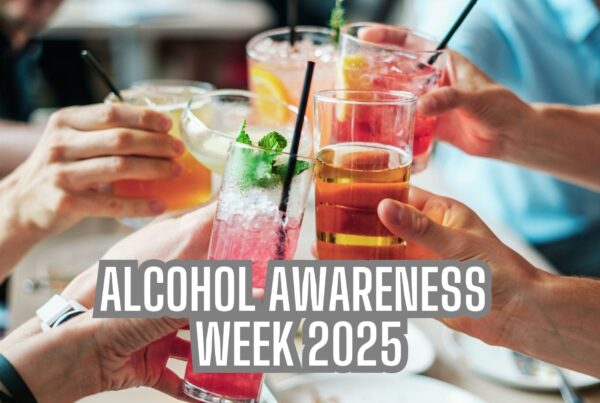How Neuroplasticity Helps You Break Addictive Habits
Have you ever felt like you’re stuck in a loop—repeating the same behaviours even when you know they’re not helping you? Maybe it’s that evening drink that turns into three, or the social media scroll that eats into your sleep. What if the key to real change wasn’t about sheer willpower, but something more profound—something already inside you? That something is neuroplasticity, and it’s quietly working behind the scenes every day. When harnessed with intention, neuroplasticity and addiction recovery become powerful allies. In this blog, we explore how neuroplasticity helps you break addictive habits and reclaim control.
Understanding Neuroplasticity: Your Brain’s Power to Change
Neuroplasticity is the brain’s incredible ability to adapt, rewire, and forge new connections throughout life. Far from being fixed, your brain is in a constant state of transformation. Everything you experience, think, feel, and repeat shapes its structure. In simple terms, neuroplasticity is your brain’s version of “muscle memory.” But instead of biceps, it’s your thoughts, feelings, and behaviours being reshaped.
Scientific research has consistently shown that the brain can “unlearn” and “relearn.” This rewiring process involves both functional plasticity—where functions shift from one brain region to another—and structural plasticity, which changes the brain’s physical architecture through repetition and learning.
How Habits Form in the Brain
So how do habits take root in the first place? It turns out that they operate through a distinct set of brain circuits, separate from those used in goal-directed decision-making. While both systems involve the striatum—a structure deep in the brain—they work in very different ways.
Breaking a habit, then, isn’t about logic or motivation alone. It’s about disrupting the old loop and creating a new one—something neuroplasticity makes entirely possible. With consistent effort, you can train your brain to respond differently to the same cue. It’s not just behavioural; it’s biological.
Why Childhood Plays a Big Role in Addictive Patterns
Many of the habits we carry into adulthood have deep roots in childhood. This isn’t about blaming parents or circumstances—it’s about recognising that early experiences shape our brain’s wiring in profound ways. From birth, the brain is soaking in information, adapting to its environment, and forming pathways based on repeated exposure.
This isn’t destiny, though. Understanding the link between early neural wiring and present-day behaviour can be liberating. It allows us to stop viewing addiction as a character flaw and start seeing it as a learned response—one that can be unlearned with the help of neuroplasticity.
When Good Intentions Go Bad: How Addiction Hijacks Neuroplasticity
The same brain functions that help us learn to ride a bike or play an instrument can also be hijacked by addiction. Substances like alcohol, nicotine, and drugs tap into the brain’s reward system, releasing floods of dopamine—a neurotransmitter linked to pleasure and motivation.
But here’s the hopeful part: just as addiction rewires the brain in one direction, recovery can rewire it in another. Through intentional effort, new connections can be built, old ones weakened, and the brain’s natural balance gradually restored.
Reclaiming the Brain: Mindfulness and Self-Awareness as Change Catalysts
One of the most effective tools in engaging neuroplasticity for recovery is mindfulness. At its core, mindfulness is the practice of paying attention—on purpose, in the present moment, without judgment. It sounds simple, but its effects on the brain are profound.
This self-awareness isn’t just therapeutic—it’s neurological. Every time you observe a thought or urge without acting on it, you’re weakening the old circuit and strengthening a new one. Over time, this practice becomes second nature. The brain begins to favour presence over impulse.
Consistency and Repetition: The Formula for Rewiring Your Brain
If there’s one golden rule of neuroplasticity, it’s this: what gets fired, gets wired. In other words, the more you practice a thought or behaviour, the stronger its neural pathway becomes. It’s like walking through a grassy field. The first time, it’s hard going. But keep walking the same path, and a trail forms.
Change doesn’t happen in a flash. It happens in the micro-decisions made daily. And yes, there will be times when the old path seems easier. That’s normal. But every time you choose the new behaviour, you strengthen it. Eventually, it becomes the new automatic.
Supporting Neuroplasticity: Sleep, Exercise, and Brain Health
While mindfulness and repetition are key, there are other powerful ways to support your brain’s ability to rewire. Neuroplasticity thrives in certain conditions—and you can actively cultivate them.
Sleep, exercise, and nutrition are foundational. Regular movement boosts neural growth, sleep consolidates learning, and a balanced diet provides the fuel your brain needs. Add cognitive stimulation—like puzzles, new learning, and social connection—and you’re giving your brain everything it needs to heal and grow.
Realistic Hope: Changing Your Brain, One Choice at a Time
Let’s be honest—breaking addictive habits is not easy. It requires patience, effort, and a lot of self-compassion. But it’s not impossible. Neuroplasticity tells us that no matter how long you’ve been stuck in a pattern, your brain has the capacity to change.
The path to recovery isn’t about flipping a switch. It’s about building a new road, step by step, even when the old one feels easier. And yes, you may trip along the way. You may even wander back. But each time you return to the new path, you strengthen it.
From Habit to Healing—Your Brain Can Be Your Ally
Understanding neuroplasticity and addiction recovery opens a new way of seeing yourself—not as someone flawed or weak, but as someone learning, growing, and healing. Your brain, once caught in cycles of compulsion, is capable of profound change.
You’re not fighting a losing battle. You’re engaging in a process—one that science supports and your experience will prove. Whether through mindfulness, consistency, or brain-supportive habits, you’re not just recovering. You’re evolving.
Release Hypnosis Melbourne Hypnotherapy
Since 2015, Lawrence Akers has been working under the name Release Hypnosis offering Hypnotherapy and ACT based work to the people of Melbourne or an online service. Based on St Kilda Rd, Release Hypnosis is an easy and convenient location to get to and accessible by the ANZAC station train and tram stop. Release Hypnosis can help with a wide range of presenting issues, and I offer a free 30 minute no obligation discovery call for those who are unsure if hypnotherapy is the right way forward for them.
Book Your FREE 30 Minute Consultation With Release Hypnosis NOW!
You may also like to read:
Hypnotherapy: A Guide to Healing Through the Subconscious
The Neuroscience of Gratitude and Effects on the Brain: Unlocking Mental Resilience
What Is The Success Rate of Hypnosis?








